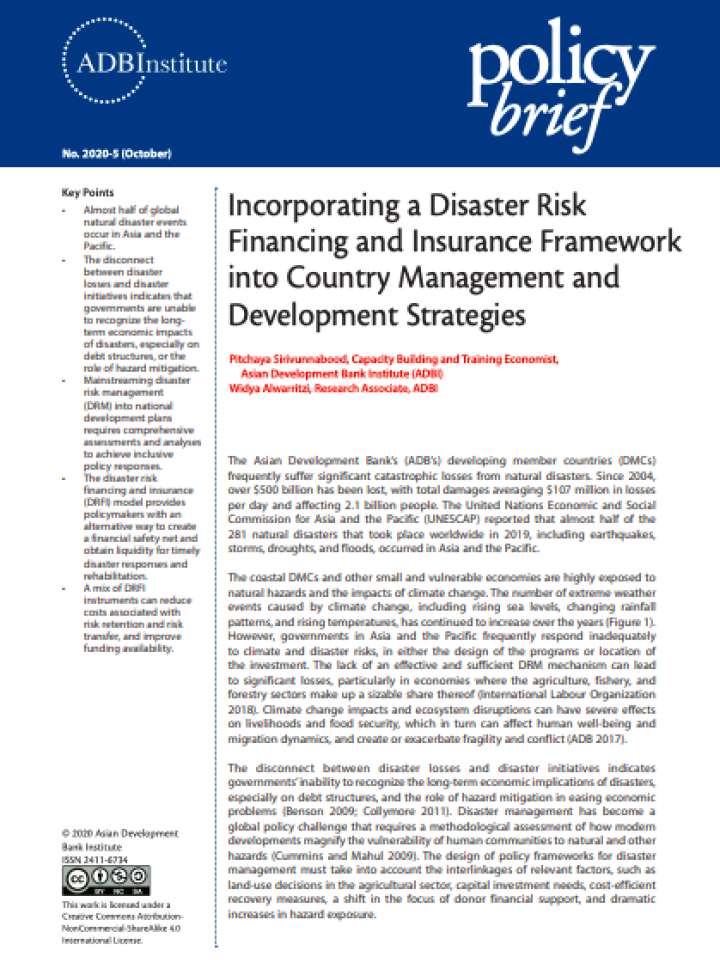Incorporating a disaster risk financing and insurance framework into country management and development strategies
The Asian Development Bank’s (ADB’s) developing member countries (DMCs) frequently suffer significant catastrophic losses from natural disasters. Since 2004, over $500 billion has been lost, with total damages averaging $107 million in losses per day and affecting 2.1 billion people. The United Nations Economic and Social Commission for Asia and the Pacific (UNESCAP) reported that almost half of the 281 natural disasters that took place worldwide in 2019, including earthquakes, storms, droughts, and floods, occurred in Asia and the Pacific.
Key points
- Almost half of the global natural disaster events occur in Asia and the Pacific.
- The disconnect between disaster losses and disaster initiatives indicates that governments are unable to recognize the long-term economic impacts of disasters, especially on debt structures, or the role of hazard mitigation.
- Mainstreaming disaster risk management (DRM) into national development plans requires comprehensive assessments and analyses to achieve inclusive policy responses.
- The disaster risk financing and insurance (DRFI) model provides policymakers with an alternative way to create a financial safety net and obtain liquidity for timely disaster responses and rehabilitation.
- A mix of DRFI instruments can reduce costs associated with risk retention and risk transfer, and improve funding availability.
Explore further
